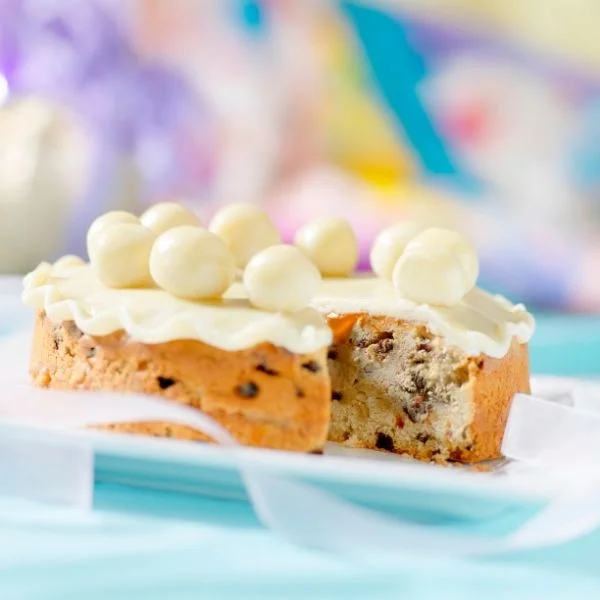Simnel cake is a delightful and traditional treat enjoyed by many during the Easter season. With a rich history dating back centuries, this cake has become synonymous with Easter celebrations in the United Kingdom and beyond. But what exactly does Simnel cake taste like?

The Origins of Simnel Cake
The history of Simnel cake can be traced back to medieval times when it was originally served on Mothering Sunday, the fourth Sunday of Lent.
Over time, it became associated with Easter due to its symbolic nature, making it a true Easter delicacy.
The Key Ingredients
To understand the taste of Simnel cake, we must first delve into its ingredients. This cake is a rich fruitcake made from a blend of dried fruits such as currants, sultanas, and raisins, which add natural sweetness and a chewy texture.
Aromatic Spices
One of the most enchanting aspects of Simnel cake is the aromatic blend of spices used in its preparation.
Warm cinnamon, nutmeg, and allspice infuse the cake with a tantalizing fragrance, offering a delightful contrast to the sweetness of the fruits.
The Almond Marzipan Center
A defining feature of Simnel cake is the layer of almond marzipan that runs through its center.
The marzipan is often subtly flavored with almond extract, adding a nutty and sweet note to the cake’s overall taste.
Moist and Dense Texture
Simnel cake boasts a moist and dense texture, which is achieved by slow baking the cake to perfection. This creates a delightful contrast with the crunchy outer layer, which is slightly caramelized during baking.
A Symbolic Treat
Beyond its delicious taste, Simnel cake holds symbolic significance. The 11 marzipan balls that decorate the cake are said to represent the 11 faithful apostles, excluding Judas.
A common tradition is to lightly toast the marzipan topping, adding an extra layer of flavor and a beautiful golden hue.
Serving Suggestions
Simnel cake is best served in thin slices, accompanied by a warm cup of tea or coffee. It’s a delightful treat to share with family and friends during Easter celebrations, creating lasting memories around the table.
Baking Your Own Simnel Cake
Baking a Simnel cake can be a rewarding experience. While many choose to purchase one from a bakery, making it at home allows for customization and the use of high-quality ingredients.
A Modern Twist: Variations of Simnel Cake
As with any traditional recipe, Simnel cake has seen various adaptations over the years.
Some bakers have experimented with adding citrus zest for a zingy kick, or even drizzling a glaze over the top for an extra touch of sweetness.
Keeping the Tradition Alive
In an age of convenience and instant gratification, the tradition of baking Simnel cake can serve as a wonderful way to connect with our culinary heritage.
It allows us to appreciate the craftsmanship of our ancestors and preserve a piece of history.
FAQs
Yes, you can substitute gluten-free flour for regular flour to make a gluten-free version of Simnel cake.
When stored in an airtight container, Simnel cake can stay fresh for up to two weeks.
Yes, you can freeze Simnel cake for up to three months. Thaw it at room temperature before serving.
While traditionally associated with Easter, many people enjoy Simnel cake throughout the year.
Conclusion
In conclusion, Simnel cake is a truly delightful treat that encapsulates centuries of tradition and history.
With its rich fruit flavors, aromatic spices, and almond marzipan center, this cake offers a unique and delicious experience for the taste buds.
Whether enjoyed as a symbol of Easter or a reminder of our culinary roots, Simnel cake holds a special place in the hearts of many.
